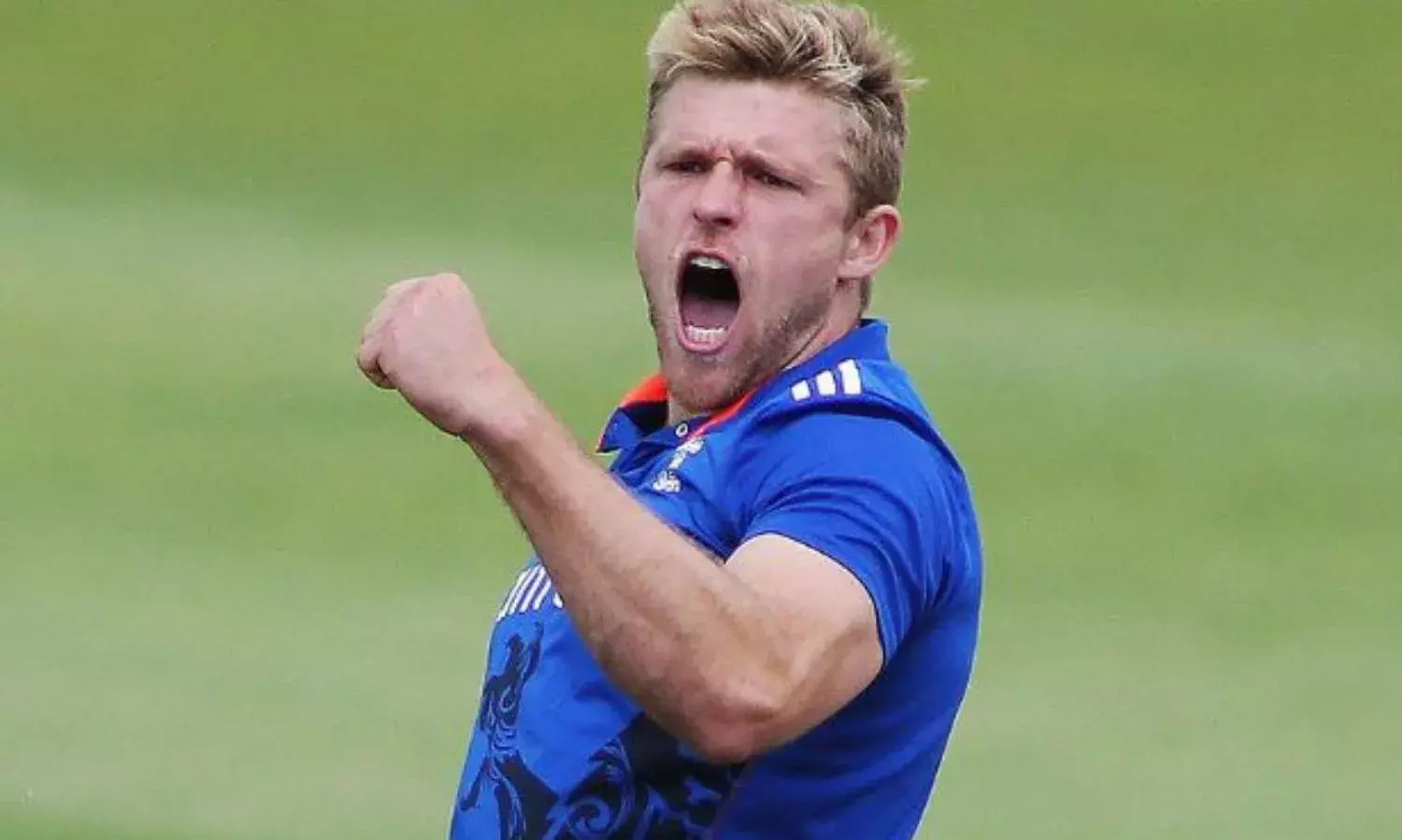How England Can Make Best Use of David Willey
A frontline seamer

“It is too much to play everything and that's cricket now. If you look around now with all the white-ball cricket around the world people can make a career out of that,” David Willey’s support for Adil Rashid opting out of First-class cricket to concentrate on white ball cricket had earned some negative traction at the time.
But with leagues thriving across the globe, the Global T20 Canada being the latest in the bandwagon, do players really need Test cricket? While Willey's statements came as a slap to red ball cricket, his chances for England in white ball cricket never improved. Seen as a new ball bowler capable of swinging the ball early on, Willey was used just for that. A tendency to leak runs stood against him and players like Tom Curran, Liam Plunkett and Sam Curran went over him in the pecking order.
That ideally should have changed once Willey showcased his hitting prowess at the top of the order for Yorkshire. Sadly, it didn't. The 34 run over against Nathan Lyon in Australia should atleast have forced England to re-think. It didn't.
Willey has played 34 ODIs for England, batting in 19 innings’, none of them above no.8 in the batting order. His highest score is a meagre 26. It is no better in the shortest format of the game where he is again used way low down the order. No.7 and no.8 has been his most common positions in the T20 setup.
There are signs this could change for the forthcoming Australian series with the most telling indication being a terrific hundred Willey slammed from no.3 in the One Day Cup for Yorkshire. The 79 ball ton is sure to get England thinking about their usage of David Willey.
As easy as it is to criticize the England management, the surplus of resources available to them in white ball cricket, complicates things. Here is a comprehensive analysis of how England might think of using Willey better.
The opening or no.3 slot
With Jason Roy, Johnny Bairstow and Alex Hales in a musical chair for two spots at the top of the order, pushing Willey in there, particularly with Root, Morgan and Buttler waiting is no easy task. But what Willey provides is a solid batting option with the calibre to up the ante from the top. While Roy is similar, his recent returns haven't been promising and teams are finding it more and more easy to dismiss him.
While Bairstow and Hales have been mighty successful, it does make sense to send Willey in during the powerplay overs and cause some damage early on. This works even more for England whose ODI mantra now is to ‘attack come what may’.
With Willey opening, Hales might have to move to 3 with Root at 4 and Morgan at 5. This means one of Stokes or Buttler could be batting as low as seven, which is definitely not ideal but on tough wickets where the ball moves around early, Willey's presence at the top could throw bowlers off-guard.
The pinch-hitter
This makes more sense considering that England can't afford to have someone with the talent of Jos Buttler coming in at no.7 each game. Willey can be used as an attacking option after the fall of a wicket or two. Dhoni's recent ploy of bringing in Harbhajan Singh and Deepak Chahar to shield himself and Bravo during the IPL this year earned a lot of attention for his description to the situation as 'chaos’.
The theory that a tail-ender, capable of taking on the best of bowlers, could create 'chaos’ and strike panic into the bowlers who are consistently looking to hit the right length was a master stroke from Dhoni. Willey can be used to similar effect with Morgan, Stokes and Buttler not the ideal options to have in situations that scream of adversity.
The bowler who bats
Of course he is a frontline seamer, one capable of moving the new ball, and it makes sense to ask him to concentrate on his bowling skills and using him down the order. But it is imperative that England realise he thrives under pressure. He isn't your regular slogger who loves to come in with the score at 300/7 and slog 30 in 10 balls to take them to 340 or 350. Willey loves pressure and loves to perform under pressure. With bat in hand,the all-rounder is a lethal striker of the ball and is capable of single-handedly weathering down opponents. He isn't your Freddie Flintoff but you would never know until you try. No.7 is the lowest England should look to bat Willey and even then, they ought to trust him more in crunch game situations.



